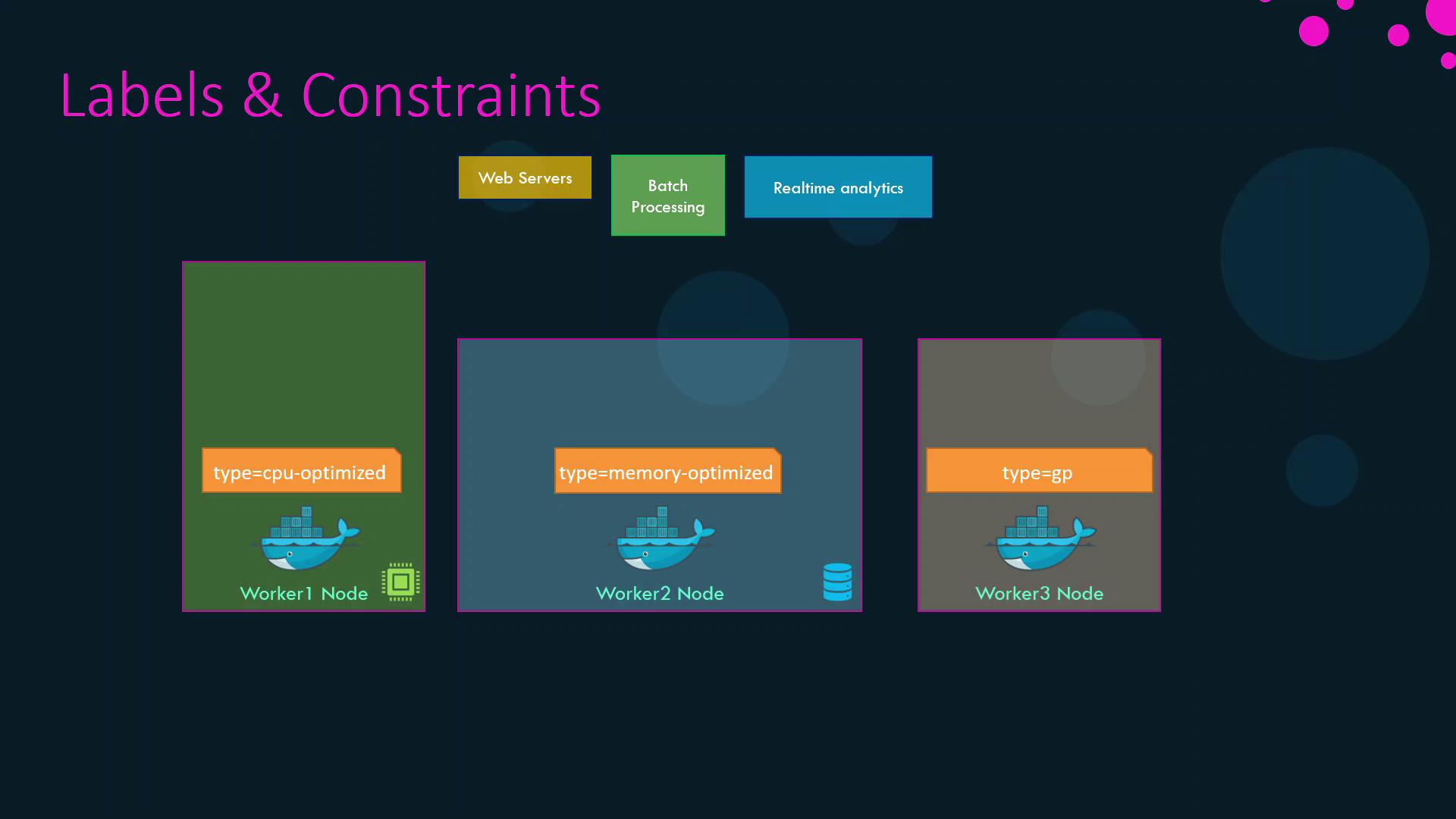Docker Certified Associate Exam Course
Docker Swarm
Placement in Swarm
Managing service placement in Docker Swarm ensures that each workload runs on the best-suited node. By default, Swarm distributes tasks evenly across any node with available resources. In real-world clusters, however, you often have nodes optimized for different workloads:
| Node Name | Label | Profile |
|---|---|---|
| worker1 | type=CPU-optimized | CPU-optimized (batch processing) |
| worker2 | type=memory-optimized | Memory-optimized (real-time analytics) |
| worker3 | type=GP | General-purpose (web servers) |
And services such as:
| Service Name | Resource Profile |
|---|---|
| batch-processing | CPU-intensive |
| realtime-analytics | Memory-intensive |
| web | General-purpose |
Without explicit placement constraints, Swarm might schedule a CPU-heavy task on a memory-optimized node or vice versa, causing contention and inefficiency.
1. Labeling Nodes
Assign key-value labels to each node to reflect its resource profile:
docker node update --label-add type=CPU-optimized worker1
docker node update --label-add type=memory-optimized worker2
docker node update --label-add type=GP worker3
Verify Node Labels
After labeling, confirm with:
docker node inspect --format '{{ .Description.Hostname }}: {{ .Spec.Labels }}' worker1
Below is a diagram illustrating the labeled nodes and associated workloads:

2. Applying Placement Constraints
Use the --constraint flag with docker service create to bind services to nodes based on labels or built-in properties.
2.1 Match a Label
Schedule CPU-intensive and memory-intensive services on their respective optimized nodes:
docker service create \
--name batch-processing \
--constraint 'node.labels.type==CPU-optimized' \
batch-processing
docker service create \
--name realtime-analytics \
--constraint 'node.labels.type==memory-optimized' \
realtime-analytics
2.2 Exclude a Label
Prevent the web service from running on memory-optimized nodes:
docker service create \
--name web \
--constraint 'node.labels.type!=memory-optimized' \
web
This ensures web is placed on either the CPU-optimized or general-purpose node.
Constraint Syntax
Constraint expressions are case-sensitive and must be enclosed in quotes.
For more options, see the Service Create reference.
2.3 Using Built-in Node Properties
You can also constrain by node role. For example, to run a service only on worker nodes (excluding managers):
docker service create \
--name worker-only-service \
--constraint 'node.role==worker' \
alpine:latest ping docker.com
3. Summary of Constraints
| Service Name | Constraint |
|---|---|
| batch-processing | node.labels.type==CPU-optimized |
| realtime-analytics | node.labels.type==memory-optimized |
| web | node.labels.type!=memory-optimized |
| worker-only-service | node.role==worker |
By combining node labels with placement constraints, you guarantee that each workload in your Swarm cluster runs on the most suitable hardware, improving both performance and resource utilization.
Links and References
Watch Video
Watch video content